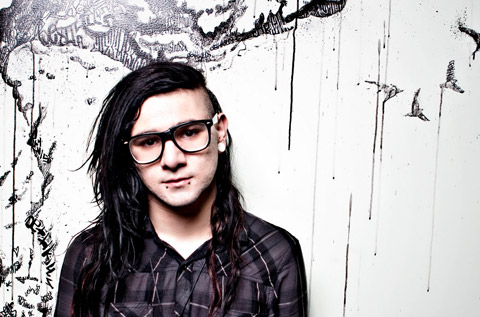
SCARY MONSTER Skrillex helped take dubstep to the mainstream, earning five Grammy nominations, including Best New Artist. |
And with a single magazine cover, it was written. It's of no matter that the periodical in question is Spin, whose coverage has bent so close to the charts over the past decade that it's essentially become Billboard. Or that the author of the kingmaking October cover story is Philip Sherburne, one of the leading electronic music writers of his generation, who has since admitted that he penned the article to big-up his own clout more than that of the cover boy.No, what really matters is what happens when a teenager peruses the magazine rack at his neighborhood CVS in Anytown, USA, and gleans a peek at Skrillex's pasty mug. There he sees the ambassador of "The New Rave Generation" — whatever that is. And another dubsteb fan is born.
And that in itself raises two questions. First, how did dubstep get here? For the long answer, try Wikipedia. The short version reveals dubstep's origins in an amalgamation of UK-birthed genres — grime, drum-and-bass, garage — fully entering UK indie consciousness in 2007 with Burial's Untrue and eventually grabbing the broader European public's ear sometime later, as with most upstart genres, via UK chartmakers Magnetic Man and plenty of BBC Radio 1 airtime.
But how did it get to America? This is a country that's never hosted a non-underground electronic scene, nevermind a "New Rave Generation," populated by geeked-up suburbanites all bowing in unison to He who is called Skrillex. As noted in Sherburne's astute feature, it wouldn't be out of bounds to blame Daft Punk for the explosion. Yes, the Parisian robot duo's revival may have come and gone, but it was a thing — a thing that offered the realization that rave could still exist, even if only in a field in the middle of the California desert. Regardless of whether Daft Punk were actually "playing" anything at Coachella 2006, there was a fucking pyramid, and for that, we can dance.
It would be difficult to charge Deadmau5 with grand larceny of Daft Punk's swag, but the duo must at least feel they're owed some royalties. Deadmau5 doesn't play dubstep, so he isn't quite the answer to how it broke in the States, but his rave appeal is the primary reason that binging on ecstasy has surpassed basketball as the third most popular sport amongst our nation's high schoolers.
Dubstep — as it's currently recognized by the masses — can largely be attributed to a sole perp: LA-via-Leeds DJ/producer Christopher Mercer, a/k/a Rusko, who was able to co-opt the guttural gloom of UK forefathers like Skream and Benga and chic it out with things us Americans love like hip-hop breaks and souped-up pop choruses. It didn't take long for those once-unsuccessful producers mulling about in the fringe in an audience-less America to catch on, leading to a roll call of breaking artists whose names could conceivably double as Syfy channel programming: 12th Planet, Pretty Lights, and yes, Skrillex.
Perhaps not so much essential to dubstep's growth, but at least a benchmark of sorts, was the Identity Festival. This past summer's traveling dubstep-centric festival went from being deemed a no-brainer money maker and game changer, to a potential financial and logistical disaster, to — when all was said and done — a rather pleasant Saturday afternoon at the Comcast Center. Nothing more, nothing less.